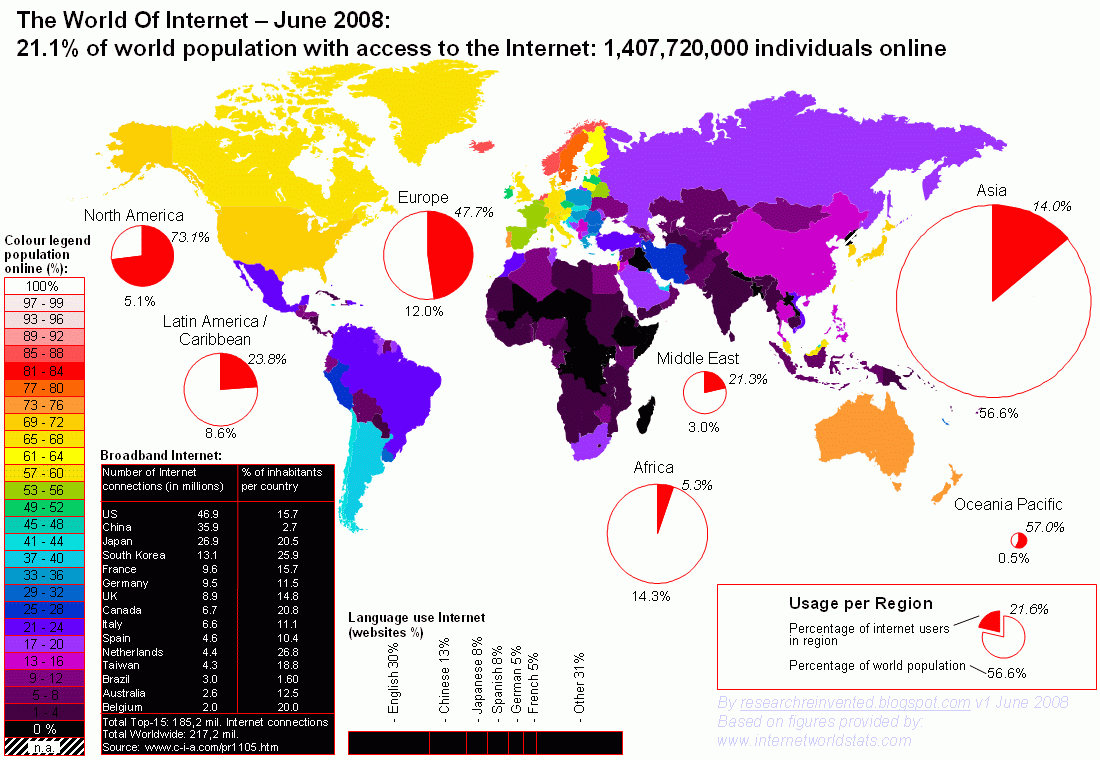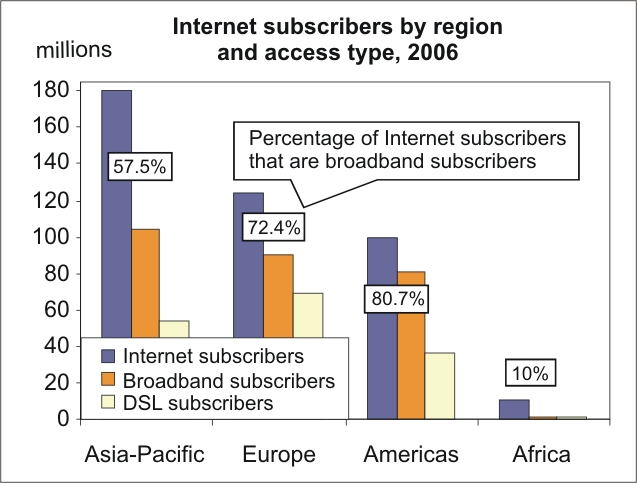Web Design by Donor Organizations for Low Bandwidth
This page provides donor organizations with key principles and recommendations for designing their websites to promote access to their grant information to nongovernmental organizations that exist in low bandwidth environments.
This Page Includes:
- Why It Is Important to Build Low Bandwidth
 Accessible Sites
Accessible Sites
- Common Frustrations When Using Sites Difficult to Use in Low Bandwidth Settings
- Specific Components of Granting Information That Are Likely to Be Most Important to An NGO
- Key Principles for Conceiving Web Pages for Low Bandwidth
- Key Recommendations for Designing Web Pages for Low Bandwidth
- Examination of a Sample of Current Donor Organization Sites
- Strengths and Weaknesses of Disseminating Grant Information Via the Internet
- Recommended Resources for Low Bandwidth Web Design
Why It Is Important to Build Low Bandwidth Accessible Sites
Imagine you are working in an NGO in remote Africa. Your connection comes and goes at the drop of a hat. When it goes, it can last a few seconds, a few hours, or even days. On your best day you are pulling 20kbps, and all you want to do is find funding without having to spend an entire day looking at one donor’s website just to find the basic information you need. You find a site, only it’s laid out in a way so that it is difficult to

glean what the organization does, what kind of information to expect from the site, and whether or not the information is still current. You have to click a lot of links to find granting information. Once you do, the grant applications are 1MB in size and will take forever and a day to download. Suddenly, your NGO is no longer just trying to obtain much ne
eded granting information, and overcome Internet access problems, it’s starting to wonder if the donor’s heart is even in the right place, with all the barriers to entry that donor is creating for the NGO. That is why it is absolutely vital that donor organizations, whose target audience includes NGOs in developing countries, make a concerted commitment to implementing as many of these recommendations for low bandwidth web design as possible.
(See more...)
Common Frustrations When Using Sites Difficult to Use in Low Bandwidth Settings
- Too many clicks to get to granting information,which requires a lot of time downloading newpages.
- Difficult to find granting information, particularly if there is not a clear link on the front page.
- Unclear if information on the site is current due to lack of dates, which can lead to a lot of time spent just trying to determine if the organization is even still active in the recipient country.
- Grant applications that come in large PDF files, which can be difficult to download.
Specific Components of Granting Information That Are Likely to Be Most Important to An NGO
- What are the funding priorities of the donor and what won’t a donor fund? Grantees shouldn’t have to spend hours searching through a site just to find out an organization isn’t even funding the type of project the grantee wants to conduct.
- When are the deadlines of the available grants? All too often, grants look like they are current when, in fact, the deadline has already passed.
- What is required of the applicant? This would include all the guidelines of applying to the grant and communicating with the donor.
- Is the donor still active in the potential grantee’s country? It can be really frustrating to dig through page after page of a site and never be able to tell whether the donor is still working in a given country. This information should be very conspicuous.
- Where should the application be sent and who can be contacted for more information?
- What are examples of projects the donor has funded? This will help guide the recipient in conceiving the project and writing the proposal.
Key Principles for Conceiving Web Pages for Low Bandwidth
- Apply a User Driven Approach: Consult members of the target audience to determine what information is most important and useful to them, and use this when designing the site's architecture and layout.
- Know Your Audience’s Needs: Most people are not willing to spend a day learning what’s contained in your site. Get them to the information they want as quickly as possible. (1)
- Learn the Demographics of Your Audience: Their age, occupations, skill levels, interests. You are not your audience. Therefore, it will take some data-gathering to be able to design for your intended audience. (2)
- Include Your Audience in User Testing: Have members of the target audience, particularly in low bandwidth situations, test the pages and offer feedback.
Key Recommendations for Designing Web Pages for Low Bandwidth
- Build Text A Only Version of Your Site: If you need to have a site with components that take up bandwidth, like graphics, consider building a mirror version of your site that is "text only."
- Have Good Site Structure: Provide easy navigation. Don't make users load unnecessary pages which are annoying for all users but really frustrating for users with low bandwidth connections. (3)
- Use A 15 Second Rule for Each Page: Users should be able to learn how to navigate and orient themselves within 15 seconds. Identify the primary purpose of each page within the first few inches of screen space. Provide a summary or quick overview of the page before the user clicks on the link, perhaps a quick blurb about the major points contained in a long page. (4)
- (See more...)
Examination of a Sample of Current Donor Organization Sites
Many major donor organizations are guilty of practices that make it challenging to view their websites in low bandwidth environments. Of course, it would be unfair to nitpick every last detail, since it is unlikely that a truly perfect website even exists. It’s not their fault there is low bandwidth in the world, and they are, at least ostensibly, trying to help make the world a better place. Thus, this examination is not intended to demonize these organizations. Instead, it is meant to offer a look at how optimal some of the sites of major donors are for low bandwidth environments, and see who might need to make improvements. Included in this sample of current donor sites are Carnegie Council of New York, European Commission, USAID, Bill and Melinda Gates Foundation, and International Renaissance Foundation, with my findings detailed in the tables and screen shots (
See more...)
Strengths and Weaknesses of Disseminating Grant Information Via the Internet
Certainly, there are many strengths in utilizing Internet technology for disseminating grant information. First, it is a relatively cheap way for donor organizations to make information on their funding programs accessible. As stated before, imagine the cost of trying to disseminate funding information via TV or radio, through mass mailings, or by sending representatives door to door? A big part of this is because a website is a pull technology, which means the donor is only paying for those who actually seek the information. With TV, radio, mail, and door to door “sales”, a donor must pay for a lot of “eyeballs” that aren’t interested in order to find the smaller percentage that actually are. And, in order to pull, all a grantee needs is an Internet connection, and it can most likely gain access to funding information—especially when donor sites are built with low bandwidth in mind. (
See more...)
Recommended Resources for Low Bandwidth Web Design
- Web Design Guidelines for Low Bandwidth – This site provides a comprehensive view of how to build a site with these topics in mind: High-Level Design, Search, HTML, CSS, Images, Compression, Caching, PDF Optimization, Downloads, Multimedia, Scripting, and Browser Compatibility.
- Principles of Web Design: A Guide – This site provides how to conceptualize a website, taking into account the needs of the user.
- Optimizing Adobe PDF files for the Web – This document describes “techniques for efficiently delivering large PDF files”, which is vital, given the prevalence of using PDFs, for example, to deliver granting application materials.
- Usability 101 – This is an online course for web designers on how to incorporate usability techniques into their design of interfaces.
- Usability.gov – This site is one of the premier guides to developing usable and useful websites.
- Website Usability Checklist – This article provides checklists and highlights important components of a usable website.
- Web Usability – This article on web usability provides important concepts to consider when designing a site.
- World Wide Web Consortium – This organization “is an international consortium where Member organizations, a full-time staff, and the public work together to develop Web standards.”
- Web Accessibility Initiative – This organization “develops guidelines which are widely regarded as the international standard for Web accessibility”.
- Loband – This site can be used by people in low bandwidth situations to simply web pages websites, in order to make them download faster over slow Internet connections.
Return to "Online Adaptation"
"Web Design by Donor Organizations for Low Bandwidth" pages researched and produced by Ben Colmery, Fall 2008.
The first image is the property of Research Reinvented
The second image is the property of the International Telecommunications Union


 Accessible Sites
Accessible Sites glean what the organization does, what kind of information to expect from the site, and whether or not the information is still current. You have to click a lot of links to find granting information. Once you do, the grant applications are 1MB in size and will take forever and a day to download. Suddenly, your NGO is no longer just trying to obtain much needed granting information, and overcome Internet access problems, it’s starting to wonder if the donor’s heart is even in the right place, with all the barriers to entry that donor is creating for the NGO. That is why it is absolutely vital that donor organizations, whose target audience includes NGOs in developing countries, make a concerted commitment to implementing as many of these recommendations for low bandwidth web design as possible. (See more...)
glean what the organization does, what kind of information to expect from the site, and whether or not the information is still current. You have to click a lot of links to find granting information. Once you do, the grant applications are 1MB in size and will take forever and a day to download. Suddenly, your NGO is no longer just trying to obtain much needed granting information, and overcome Internet access problems, it’s starting to wonder if the donor’s heart is even in the right place, with all the barriers to entry that donor is creating for the NGO. That is why it is absolutely vital that donor organizations, whose target audience includes NGOs in developing countries, make a concerted commitment to implementing as many of these recommendations for low bandwidth web design as possible. (See more...)